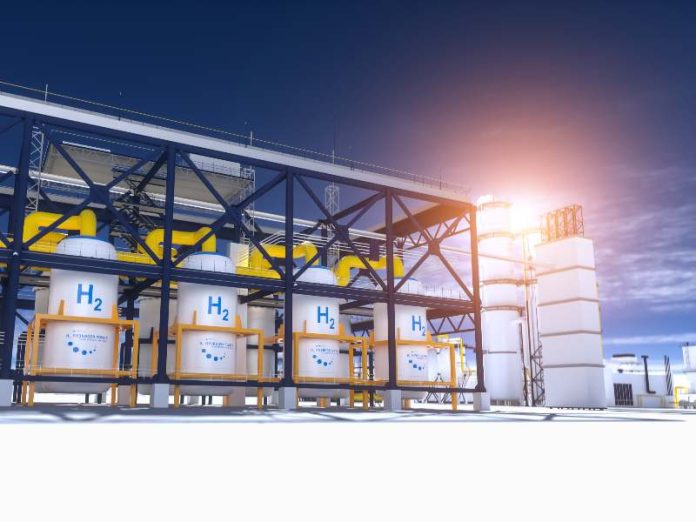
Africa could capture as much as 10% of the global green hydrogen market, helping to create up to 3.7 million jobs and adding as much as $120 billion to the continent’s gross domestic product (GDP).
This is according to a landmark report issued jointly by Masdar and its Abu Dhabi Sustainability Week platform on the sidelines of the 2022 United Nations Climate Change Conference (COP27).
Africa’s plentiful solar and wind resources could be leveraged to produce 30 to 60 million tonnes per annum (mtpa) of green hydrogen by 2050, about 5-10% of global demand, according to the report, Africa’s Green Energy Revolution: Hydrogen’s role in unlocking Africa’s untapped renewables, produced with analytical support provided by McKinsey & Company.
The report finds that an African hydrogen industry with that production capacity would likely create 1.9 to 3.7 million jobs and boost GDP by as much as $60-120 billion by 2050.
Mohamed Jameel Al Ramahi, Masdar Chief Executive Officer, said: “This report provides a blueprint for African nations to deliver sustainable, low-carbon growth while extending energy access across the continent. Green hydrogen has the potential to reduce emissions, unlock economic opportunities and create new and valuable jobs for countries across the Middle East and North Africa region.”
An opportunity to build a robust export sector
Africa could be among the most competitive sources of green hydrogen in the world, the report shows, with a cost of $1.8 to $2.6 per kilogram (kg) in 2030, further decreasing to about $1.2 to $1.6 per kg by 2050 as hydrogen production technology matures and renewable energy costs continue to decline.
Proximity to demand centres in Europe and Asia also optimally positions the continent to build an export-oriented hydrogen sector, the report suggests, noting African energy exports via green hydrogen and derivatives would reach 20 to 40 mtpa by 2050.
The remaining 10-20 mtpa would serve domestic hydrogen demand, helping to boost the electrification of African communities and delivering other socioeconomic benefits, including a more sustainable energy grid, expanded clean energy access and reduced reliance on fossil fuel imports.
Masdar Director of Asset Management and Technical Services, Mohammad Abdelqader El Ramahi, said: “Scaling up green hydrogen is an opportunity to not only build a robust global-export sector on the African continent, but also to accelerate the deployment of renewable energy overall. The grid-connected renewables used for green hydrogen production can feed energy into the grid to provide affordable clean energy to under-resourced areas – notably, in Sub-Saharan Africa, which has an average electrification rate of only 48%.”
Enabling production on the scale of 30-60 mtpa would require between 1,500 and 3,000 terawatt hours (TWh) of renewable energy – equivalent to more than 50 times Africa’s current total production from solar and wind, the report states. The largest share of the investments ($320-610 billion) would go to the renewables needed to produce the hydrogen, followed by electrolysis plants ($115-220 billion). For export projects, most of the needed capital is expected to come from foreign investors, according to the report.
Beyond investments, the report recommends six broad areas for action: development of an integrated master plan; governance, international coordination and mobilisation; establishment of regulatory frameworks for hydrogen exports; investments in infrastructure; sourcing and building a highly skilled workforce; and deployment of project de-risking mechanisms.
Agreements for green hydrogen exploration from North to Southern Africa
In line with Africa’s goals to diversify its energy mix through green energy, Globeleq, an independent power company in Africa, has recently signed a Framework Agreement with four other entities to jointly develop a large-scale green hydrogen facility within the Suez Canal Economic Zone.
The agreement was co-signed by the General Authority for Suez Canal Economic Zone (SCZONE), the Sovereign Fund of Egypt for Investment and Development (TSFE), the New and Renewable Energy Authority (NREA) and the Egyptian Electricity Transmission Company (EETC) at COP27.
Over the next 12 years, it will be developed in three phases, totalling 3.6GW of electrolysers powered by up to 9GW of solar PV and wind energy. The first phase will involve a pilot project which will produce 100,000 tons per annum of green ammonia from hydrogen, mainly targeting exports to Europe and Asia for use in fertilisers and is expected to start operations by 2026-27. Other potential end-uses of green hydrogen, including green fuels, will be considered in the medium and longer term, once they become commercially feasible.
Following the launch of the next phase of the UK-South Africa Infrastructure Partnership, the countries will also join forces to turbocharge infrastructure investment, help unlock green hydrogen opportunities in the sector and boost skills development through new grant-funded technical assistance.
This development comes shortly after Namibia, through HDF Energy, was granted a €500 million loan facility by the European Commission to develop the country’s green hydrogen sector. Similarly, Uganda’s Ministry of Energy recently signed a Memorandum of Understanding with HDF Energy to advance green hydrogen development through green power generation using hydrogen-based storage as an alternative source of electricity.